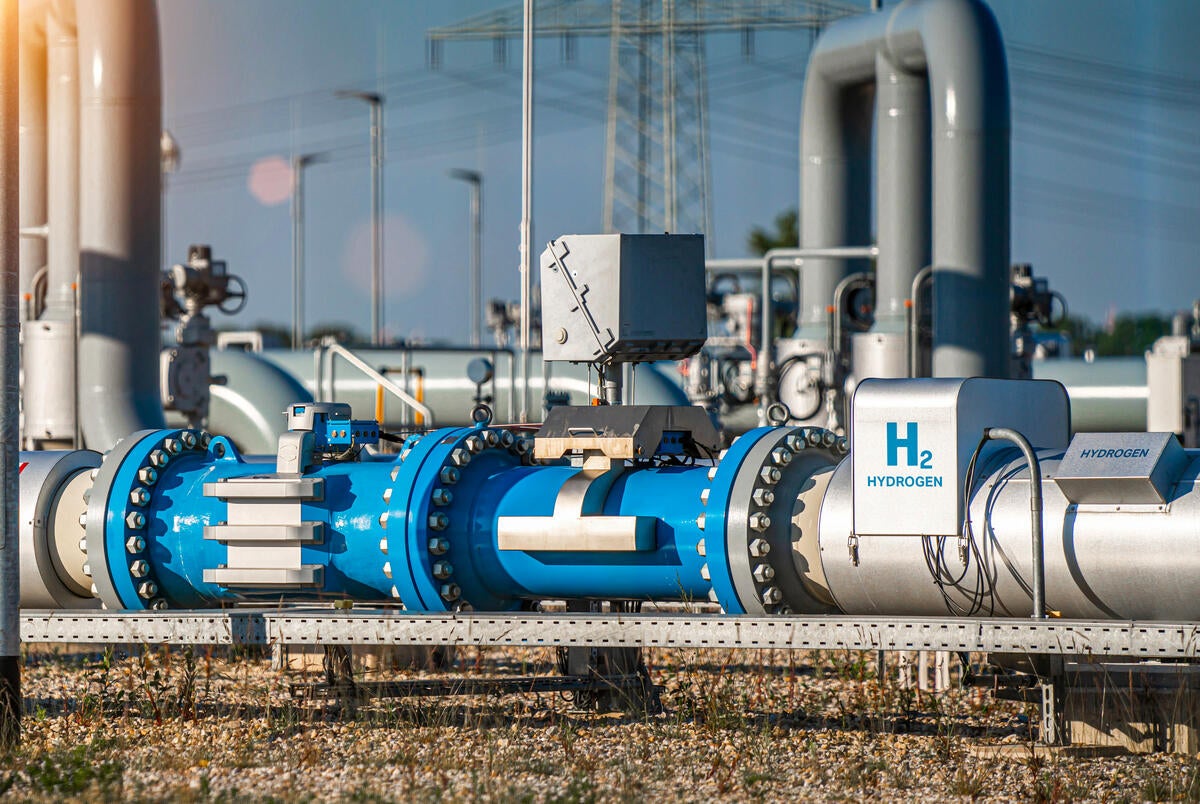Known Unknown: Current hydrogen leak estimates vary by up to 100-fold. We need to know more before betting the farm

Enthusiasm for hydrogen as a climate-friendly fuel of the future is everywhere. Hundreds of hydrogen energy projects worth more than $500 billion have been announced, and The International Energy Agency says hydrogen demand could increase sixfold by 2050.
Scientists, though, are confident that this leak-prone gas can warm the climate when it escapes into the atmosphere. Just how much warming will depend on how much hydrogen is emitted, and that remains a giant question mark. That’s why Environmental Defense Fund set out to identify the climate risks of future hydrogen emissions and help develop technology that can detect how much hydrogen escapes from today’s infrastructure.
EDF’s groundbreaking 2022 study explained how unchecked hydrogen emissions can severely undercut the climate benefit of switching from fossil fuels to hydrogen. We found that if it’s not done right, using hydrogen could be worse for the near-term climate than the fossil fuels it would replace.
But getting a grasp on real-world hydrogen emission rates is complicated because existing technology can only detect large leaks that pose safety risks at industrial facilities. The tech that can detect smaller leaks – the kind that, when multiplied by the thousands of facilities, can worsen climate change — is just now being developed.
This challenge has resulted in wildly varied estimates of the real hydrogen emission problem through the many stages of the supply chain, from production to end use.
Published in Frontiers in Energy Research, EDF’s new paper analyzed literature to date that estimates hydrogen emissions. Our goal is to provide clarity about what we do and don’t know about how much hydrogen is leaking throughout the value chain.
The bottom line? No one really knows.
Estimates of total hydrogen emissions rates across the value chain range from about 0.0003% to 20%. Estimates also vary wildly for individual stages. The largest ranges in estimated emissions rates are associated with liquid hydrogen because it is easy for it to evaporate, known as “boil-off.” Thus, the stages with the largest variation include the deep cooling process required to transform the gas into a liquid, called liquefaction (0.15%–10%), liquid transport and handling (2%–20%), and refueling (2%–15%),
If these ranges strike you as large, you’re right. They are. If we’re going to invest billions of dollars in a “climate solution” that could actually cause warming, we need better answers.
Known Unknown: Current hydrogen leak estimates vary by up to 100-fold. We need to know more before betting the farm Share on XMore Research, More Caution Needed
Based on the extremely wide ranges of the estimates, the paper echoes concerns and needs that EDF scientists and many others have been raising.
First, there are actions we can pursue now to begin minimizing hydrogen emissions — even before we fully understand where the emissions are coming from and how much is emitted. Because hydrogen (H2) is the smallest molecule in the universe, we know it is prone to leakage, and the practices that reduce methane and other gaseous energy leaks can serve as useful guides.
Second, because the science is clear that hydrogen emissions can cause global warming, we must start incorporating the climate risks of hydrogen systems into decision making when developing plans to scale up hydrogen deployment.
Third, we need high-precision hydrogen detection technology so we can determine the seriousness of the issue and identify mitigation measures and best practices. There is a significant gap in emissions data for the total hydrogen value chain that will only be filled by technology that can detect hydrogen at the parts-per-billion level, as opposed to the parts-per-million level of safety-focused detectors. EDF is leading an effort to pursue this technology and begin measuring emissions from facilities.
Together, these suggestions underscore the importance of doing all we can now to reduce leaks and tempering our hydrogen expectations until we know more. Hydrogen may very well be a game changer for some industries or countries as the world decarbonizes. But for now, we should proceed with measured caution.










